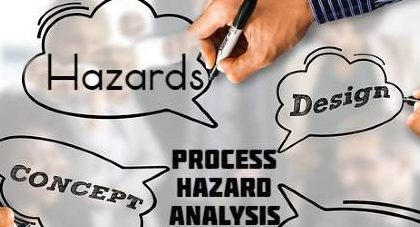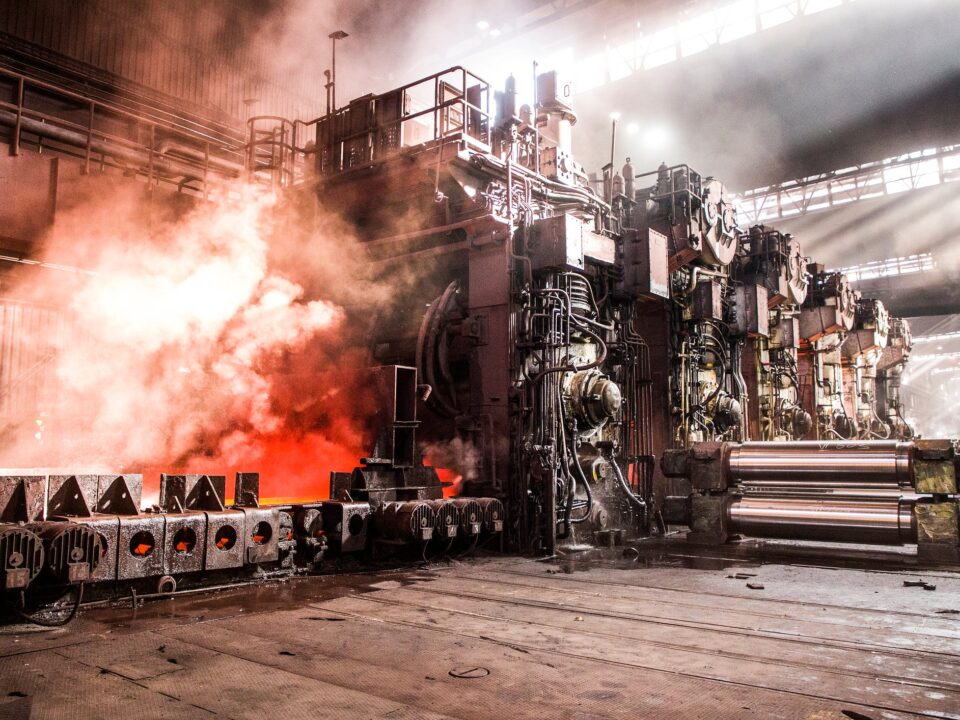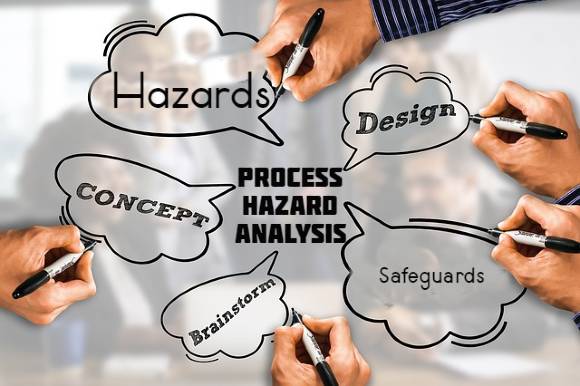Hazard Identification Risk Assessment Study report

Behavior Based Safety Implementation Handholding – The Safety Master
May 18, 2024Behavior-Based Safety: The Pros and Cons
May 21, 2024Introduction
In the realm of safety management, understanding and mitigating risks is paramount. Hazard identification and risk assessment are key components of this process, providing insights into potential dangers and allowing for preemptive measures to be taken. This article delves into the intricacies of hazard identification and risk assessment, exploring their significance and offering practical insights for effective implementation.
Understanding Hazard Identification
Hazard identification involves the systematic recognition of potential hazards in the workplace environment. These hazards can range from physical dangers such as slippery floors to chemical exposures or ergonomic risks. By identifying these hazards, organizations can take proactive steps to minimize risks and ensure the safety of employees.
Identifying Potential Hazards
Identifying hazards requires a keen eye and an understanding of various workplace factors. It involves thorough inspections, employee feedback, and analysis of past incidents. By conducting regular inspections and engaging employees in the process, organizations can uncover potential hazards that may have otherwise gone unnoticed.
Risk Perception
Understanding how different hazards pose risks is crucial. Some hazards may have immediate and severe consequences, while others may present long-term health risks. By gauging the severity and likelihood of these risks, organizations can prioritize their mitigation efforts effectively.
The Importance of Risk Assessment
Risk assessment complements hazard identification by quantifying the potential risks and their likelihood of occurrence. This process provides valuable insights into which hazards pose the greatest threats and helps prioritize control measures.
Proactive Safety Management
By conducting risk assessments, organizations can adopt a proactive approach to safety management. Rather than waiting for accidents to occur, they can anticipate potential risks and implement preventive measures to mitigate them.
Decision Making
Risk assessments inform decision-making processes regarding safety measures and resource allocation. They help organizations determine where to focus their efforts and investments for maximum impact on safety outcomes.
Methods of Hazard Identification
There are various methods and techniques available for identifying hazards in the workplace. These methods can be categorized into qualitative and quantitative approaches, each offering unique insights into potential risks.
Qualitative Methods
Qualitative methods rely on expert judgment and subjective assessments to identify hazards. Techniques such as brainstorming sessions, checklists, and job safety analyses are commonly used to identify potential risks.
Quantitative Methods
Quantitative methods involve numerical analysis to assess risks objectively. Techniques such as fault tree analysis, hazard and operability studies (HAZOP), and probabilistic risk assessment (PRA) provide quantitative data on the likelihood and consequences of hazards.
Common Workplace Hazards
Workplaces across various industries are susceptible to a wide range of hazards. Understanding these common hazards is essential for effective risk management and prevention.
Physical Hazards
Physical hazards include factors such as machinery, noise, and extreme temperatures. These hazards can result in injuries, such as cuts, burns, or musculoskeletal disorders.
Chemical Hazards
Chemical hazards encompass exposure to harmful substances, such as toxic gases, solvents, or dust particles. Proper handling and storage of chemicals are essential to minimize the risks associated with exposure.
Biological Hazards
Biological hazards arise from exposure to living organisms, such as bacteria, viruses, or fungi. In healthcare settings, for example, healthcare workers may be at risk of exposure to infectious diseases.
Psychosocial Hazards
Psychosocial hazards pertain to factors such as workplace stress, harassment, or bullying. These hazards can have significant impacts on employee well-being and productivity if not addressed effectively.
Conducting a Risk Assessment
Conducting a risk assessment involves several key steps to ensure a comprehensive evaluation of potential risks and their impacts.
Identify Hazards
The first step in conducting a risk assessment is to identify potential hazards present in the workplace environment. This may involve physical inspections, reviewing incident reports, and consulting with employees.
Assess Risks
Once hazards are identified, the next step is to assess the risks associated with each hazard. This involves evaluating the likelihood and severity of potential consequences, considering factors such as frequency of exposure and potential harm.
Control Measures
Based on the risk assessment findings, control measures are implemented to mitigate or eliminate identified risks. These measures may include engineering controls, administrative controls, or personal protective equipment (PPE).
Monitor and Review
Continuous monitoring and review of risk controls are essential to ensure their effectiveness over time. Regular inspections, incident investigations, and feedback mechanisms help identify any emerging risks or deficiencies in control measures.
Risk Assessment Tools and Software
Various tools and software are available to streamline the risk assessment process and enhance its effectiveness.
Risk Assessment Matrix
A risk assessment matrix is a visual tool used to evaluate the likelihood and severity of potential risks. It helps prioritize risks based on their significance and guides decision-making regarding risk mitigation strategies.
Safety Management Software
Safety management software provides organizations with comprehensive solutions for managing safety processes, including hazard identification, risk assessment, incident reporting, and compliance tracking. These software solutions streamline workflows and facilitate collaboration among stakeholders.
Benefits of a Comprehensive Study
Conducting a comprehensive hazard identification and risk assessment study offers numerous benefits for organizations and their employees.
Prevention of Incidents
By identifying and mitigating potential risks proactively, organizations can prevent accidents and injuries in the workplace, safeguarding the health and well-being of employees.
Improved Compliance
A thorough risk assessment helps organizations comply with regulatory requirements and industry standards related to safety management. This reduces the risk of legal penalties and reputational damage.
Implementing Risk Mitigation Strategies
Once risks are identified and assessed, organizations must implement appropriate control measures to mitigate or eliminate these risks effectively.
Engineering Controls
Engineering controls involve modifying the workplace environment or processes to reduce exposure to hazards. Examples include installing safety guards on machinery or implementing ventilation systems to control chemical exposures.
Administrative Controls
Administrative controls focus on changing work practices or policies to minimize risks. This may include implementing training programs, establishing safety protocols, or rotating job tasks to reduce exposure to hazards.
Monitoring and Reviewing Risk Controls
Continuous monitoring and review of risk controls are essential to ensure their ongoing effectiveness and relevance.
Regular Inspections
Regular inspections of the workplace help identify any new hazards or deficiencies in existing control measures. These inspections should involve all relevant stakeholders, including management, supervisors, and employees.
Incident Investigations
Incident investigations provide valuable insights into the effectiveness of risk controls by analyzing the root causes of accidents or near misses. Lessons learned from these investigations can inform improvements to safety processes and procedures.
Case Studies
Real-life case studies illustrate the importance of hazard identification and risk assessment in preventing accidents and promoting safety in the workplace.
Construction Site Safety
A construction company implemented a comprehensive risk assessment program that identified potential hazards such as falls from heights and struck-by incidents. By implementing control measures such as fall protection systems and safety training, the company significantly reduced the number of accidents and injuries on its construction sites.
Chemical Manufacturing Facility
A chemical manufacturing facility conducted a hazard analysis of its processes and identified risks associated with chemical exposures and fire hazards. By implementing engineering controls such as ventilation systems and chemical storage protocols, the facility improved safety standards and compliance with regulatory requirements.
Challenges and Solutions
While hazard identification and risk assessment are valuable tools for safety management, they can present challenges for organizations.
Resource Constraints
Limited resources, such as time and budget, can hinder organizations’ ability to conduct thorough hazard identification and risk assessment studies. To address this challenge, organizations can prioritize high-risk areas and leverage available tools and expertise effectively.
Employee Engagement
Engaging employees in the hazard identification and risk assessment process can be challenging, particularly if there is a lack of awareness or motivation. Implementing training programs and communication strategies can help overcome this challenge and foster a culture of safety within the organization.
Legal Compliance
Compliance with legal requirements related to hazard identification and risk assessment is essential for organizations to ensure the safety of their employees and avoid potential liabilities.
Occupational Safety and Health Administration (OSHA) Regulations
In the United States, OSHA sets forth regulations and standards for workplace safety, including requirements for hazard identification, risk assessment, and control measures. Non-compliance with these regulations can result in penalties and fines for organizations.
Training and Education
Training and educating employees on hazard identification and risk assessment are critical components of a successful safety management program.
Safety Training Programs
Organizations should provide comprehensive safety training programs to employees to raise awareness of potential hazards and empower them to take proactive measures to mitigate risks. These programs should cover topics such as hazard recognition, risk assessment, and emergency response procedures.
Conclusion
Hazard identification and risk assessment are essential processes for ensuring workplace safety and preventing accidents and injuries. By systematically identifying hazards, assessing risks, and implementing control measures, organizations can create safer work environments and protect the health and well-being of their employees. It is imperative for organizations to prioritize safety management and invest in comprehensive hazard identification and risk assessment programs to mitigate risks effectively.




